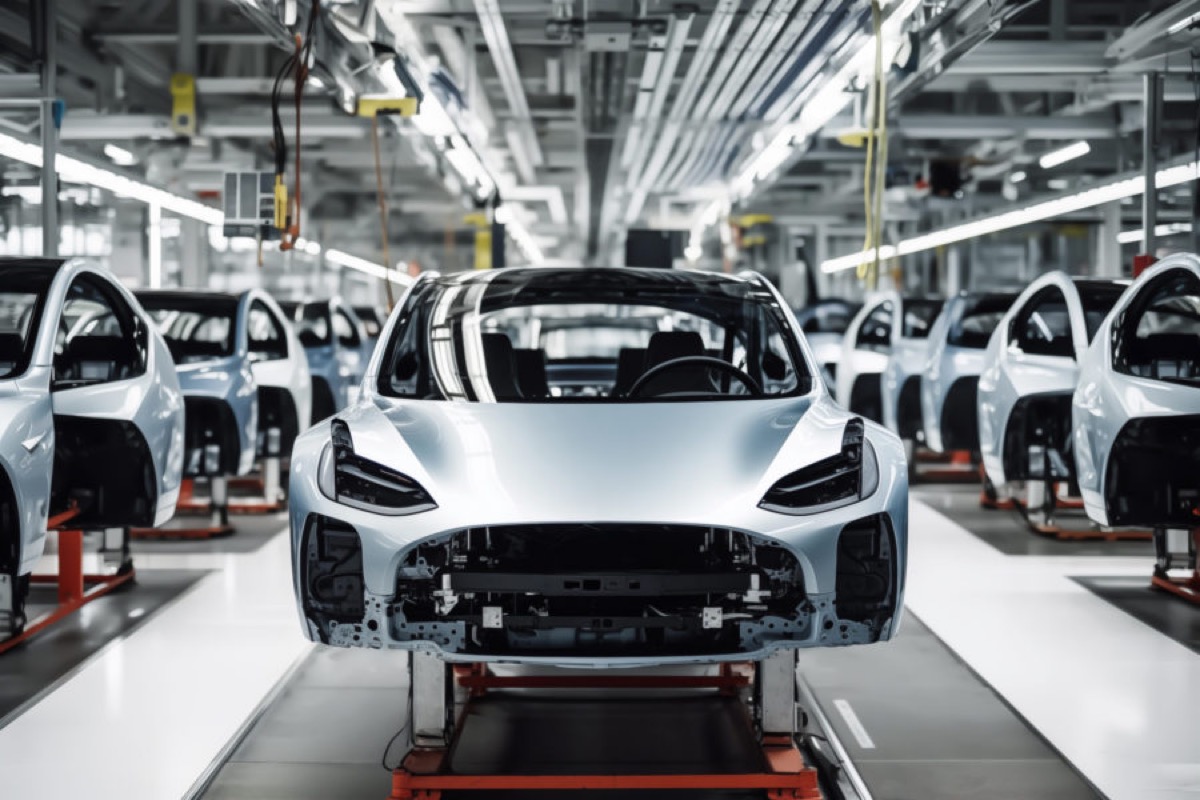If we see higher interest rates in the U.S. and Eurozone, will gold and silver fall?
 We all have a tendency to listen to statistics and formulae and believe that they drive the monetary system. This starts on a false basis because these numbers are driven by more fundamental realities. They should be the result of measured realities, but they can be structured in a way that ignores some of the basics. Interest rates are not just one item. It’s too general a term. There are a host of interest rates even at basic levels that are the results of economic environments. Is there a difference between interest rates rising to be less ‘negative’ and interest rates that turn from negative to positive interest rates? There’s a world of difference. It’s the same with inflation. Inflation that is less than growth is a very different animal to inflation when there is no growth. It’s these differences which dictate whether gold and silver are going to rise or fall in the future. We look at some of these differences in this article and for subscribers plus the scene that lies ahead. We also look at what relationship there is between gold and silver and interest rates.
We all have a tendency to listen to statistics and formulae and believe that they drive the monetary system. This starts on a false basis because these numbers are driven by more fundamental realities. They should be the result of measured realities, but they can be structured in a way that ignores some of the basics. Interest rates are not just one item. It’s too general a term. There are a host of interest rates even at basic levels that are the results of economic environments. Is there a difference between interest rates rising to be less ‘negative’ and interest rates that turn from negative to positive interest rates? There’s a world of difference. It’s the same with inflation. Inflation that is less than growth is a very different animal to inflation when there is no growth. It’s these differences which dictate whether gold and silver are going to rise or fall in the future. We look at some of these differences in this article and for subscribers plus the scene that lies ahead. We also look at what relationship there is between gold and silver and interest rates.
Why should gold and silver react to interest rates?
Before 1970, gold was money to all and sundry. Currencies were expressed in terms of their value against gold. In 1971 President Nixon and the I.M.F. sought to have gold cease to be a value definer of currencies and in particular of the dollar. From the late seventies currencies and their interest rates were separated from gold values. The gold price was forced down to emphasize this point and to focus the world’s attention solely on paper
currencies [in particular the dollar] as the world’s measure of value. Interest rates in a growing developed world reflected economic conditions within a nation and ignored their impact on exchange rates.
Since the turn of the century this environment has evolved into one where interest rates directly impact exchange rates. In turn, but at a slowing pace, gold prices reflected the value of a currency plus its interest rate. From 2000 up to the first impact of the ‘credit crunch’ gold has reflected the sum total of global economic conditions as they pertain to gold. The impact of an individual nation’s interest rate, including that of the U.S. has had a decreasing influence on gold prices. Gold is now an internationally sought after, financial-security-preserving asset that reflects no individual nation’s currency value or interest rate.
The influence of the U.S. dollar or its interest rates on gold prices has and will lessen. But this has not been accepted in either the States or in the Eurozone. It is felt there that the dollar is gold’s ultimate measure of value and its interest rates a definer of gold’s value. Most developed world commentator’s therefore believe that if U.S. interest rates rise, the gold price and by extension, silver prices, will fall. To some extent [because of the lessening impact of U.S. and other developed world investors] this will happen, producing smaller falls for a shorter time. The bulk of global gold demand now does not chase gold prices nor react to national interest rate changes. The influence of U.S. markets over day-to-day prices of gold is still significant because investors there still buy and sell quickly securing profits as their prime objective. The ‘buy-and-hold’ concept is like a tide in the sea, whereas U.S. markets are the individual waves on the beach. The tide will always win out. Initially the U.S. view will dominate, but over time the gold and silver markets outside the U.S. will overwhelm U.S. market views. But under what circumstances will interest rate rises cause gold and silver prices to fall?
The right conditions first
Before real interest rates appear, certain internal economic conditions must change against both a global and local economic backdrop Here’s why:
The Fed is watching the state of the economy. Its current task is to ensure that the economy is neither deflating nor inflating excessively, while attempting to stimulate growth. It is not to ensure ‘price stability’ as was once the case. It is to place the U.S. economy on a growth path that is self-sustaining. It’s having to do this against a background of the slow, almost osmotic process of manufacturing moving out of the U.S. to the east of the globe. U.S. manufacturing companies are leading this exit and will continue to do so for the sake of profits. The Fed’s actions ripple across the globe and, incredibly, impact Asia before they impact the U.S. Why?
- Any stimulation of the economy in the U.S. has to stimulate the economy at consumer level. Consumers now prefer the goods they can afford, so favoring Asian imports above U.S. manufactured goods. This process leads to a perpetual trade deficit, again favoring Asia. Money paid overseas for goods, hurts the U.S. money supply and increases dependence on foreign [primarily Asian] surplus nations to reinvest in the U.S. That reinvestment does not go into the economy at consumer level. It goes to the government.
- Originally quantitative easing was aiming to stimulate the economy via the banking system then onto businesses then onto the consumer to alleviate his problems. This has not happened even after all this time. The housing market [which led the decline] is sinking lower and lower still discouraging the consumer. Employment has failed to rise to the extent that consumers feel safe in their jobs and have sufficient disposable income to sustain a growing economy. Without a healthy consumer the U.S. economy will not reach a strong recovery.
The cessation of Q.E. and subsequent raising of interest rates would be the result of the Fed believing that the economy is sufficiently strong to warrant monetary tightening. It would also need to feel comfortable that the banking system is not only sound, but also lending into the economy as vigorously as it did before August 2007. It isn’t. Its focus is certainly no on the consumer’s invigoration, but on profits, as always. The disconnect between these two objectives is rather like a person having a blood system that is failing to provide sufficient blood to reach the outer capillaries on the body’s surface. This has to happen for the economy to be healthy and capable of bearing up under either tightening money supplies or rising interest rates.
Will the government or the Federal Reserve lead the way?
No matter what manipulation of money supply through QE [as we have seen in the last three years] or interest rates, the Fed isn’t in control of
the economy. It can act as an accelerant or a brake but not as the motor itself. The divided U.S. government is certainly not in a position to provide growth or confidence, so sorely needed now, inside the U.S. or the globe. It remains the consumer inside the U.S. that will decide the road forward for the U.S. economy. He will respond to monetary and growth stimuli, if it is effective, but he will always lead the way.
We feel for the Chairman of the Federal Reserve because he knows this and needs the direct support of a synthesized government to propel the consumer forward. The Fed can’t lead the way by itself. The current emasculated government is incapable of providing the stimuli that will truly resuscitate the U.S. economy. Its current actions should be accepting its declining global role and perhaps taking action to stem the flow of wealth and power eastwards. This requires certain protectionist measures that may well conflict with the objectives of the large U.S. companies [exporting production overseas] and capitalism itself. How long will the U.S. uphold global capitalism as it leads to the seeping of wealth and power from the U.S.?
Will interest rates be raised?
The reason for raising interest rates that will bring gold and silver prices down, if a global phenomenon would be to lower inflation in a healthy global economy which could withstand rate hikes. Ideally, rising interest rates will match the expansion of the money supply as the economy grows as has been a constant picture in China for more than a decade now. This would allow money itself to remain healthy. Positive ‘real’ interest rate promotes savings and curtails spending. Should this happen, yes, gold and silver prices will fall, because paper currencies will gain such a good reputation for stability, value, excellent governance, while producing a real return that is likely to persist for the foreseeable future. The housing market will make a spectacular recovery, employment will rise rapidly and consumers will feel confident enough in the future to again “live now, pay later”.
If this happens, you should expect to see a squadron of pigs circling the White House in perfect formation.
Right now, the U.S. recovery would be damaged with positive real interest rates. So don’t expect ‘positive real’ interest rates for a very long time.
The wrong reason to raise interest rates would be to simply to keep up with, but below rising inflation. If interest rates are less than inflation they become ‘negative’ interest rates [as they are now]. This gives deposits little value and lead to the depreciation of deposits and savings. The intention is therefore to spur spending and borrowing. It was hoped by the Fed that negative interest rates would have left the recovery sufficiently stimulated to become self sustaining, but the sight of the housing market going into a steep decline right now means that this policy has failed so far and any interest rate hike, at all, is unlikely to happen for a very long time. So no, we do not expect interest rates to be raised for the right or the wrong reasons. In these circumstances rising ‘negative’ interest rates would lead to rising gold and silver prices.
Continuously failing stimulation measures, with rising inflation is the perfect formula for failing confidence. Investors would flee from currencies to assets to protect themselves from failing currencies.
More News
{{ commodity.name }}
{{ post.title }}
{{ post.date }}



Comments